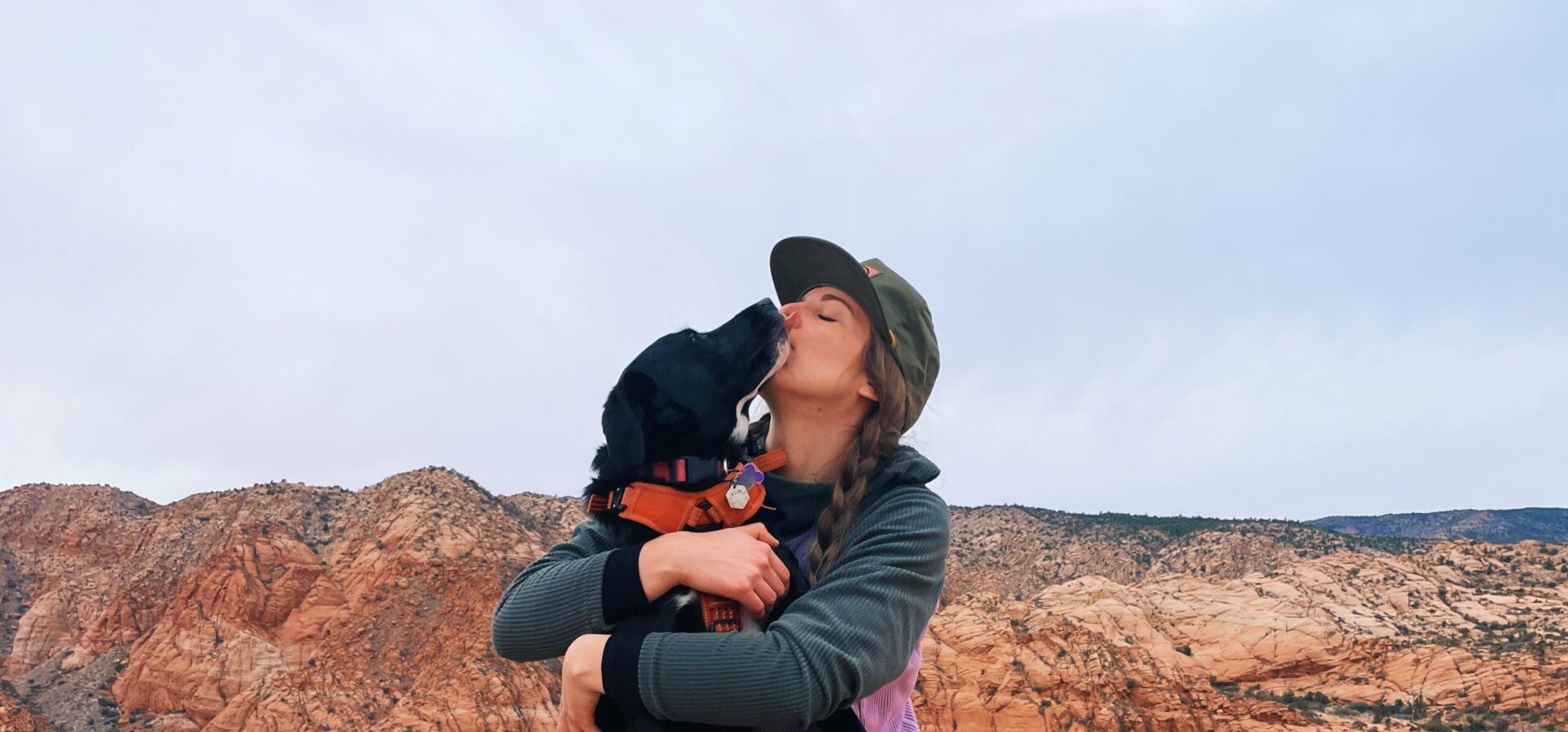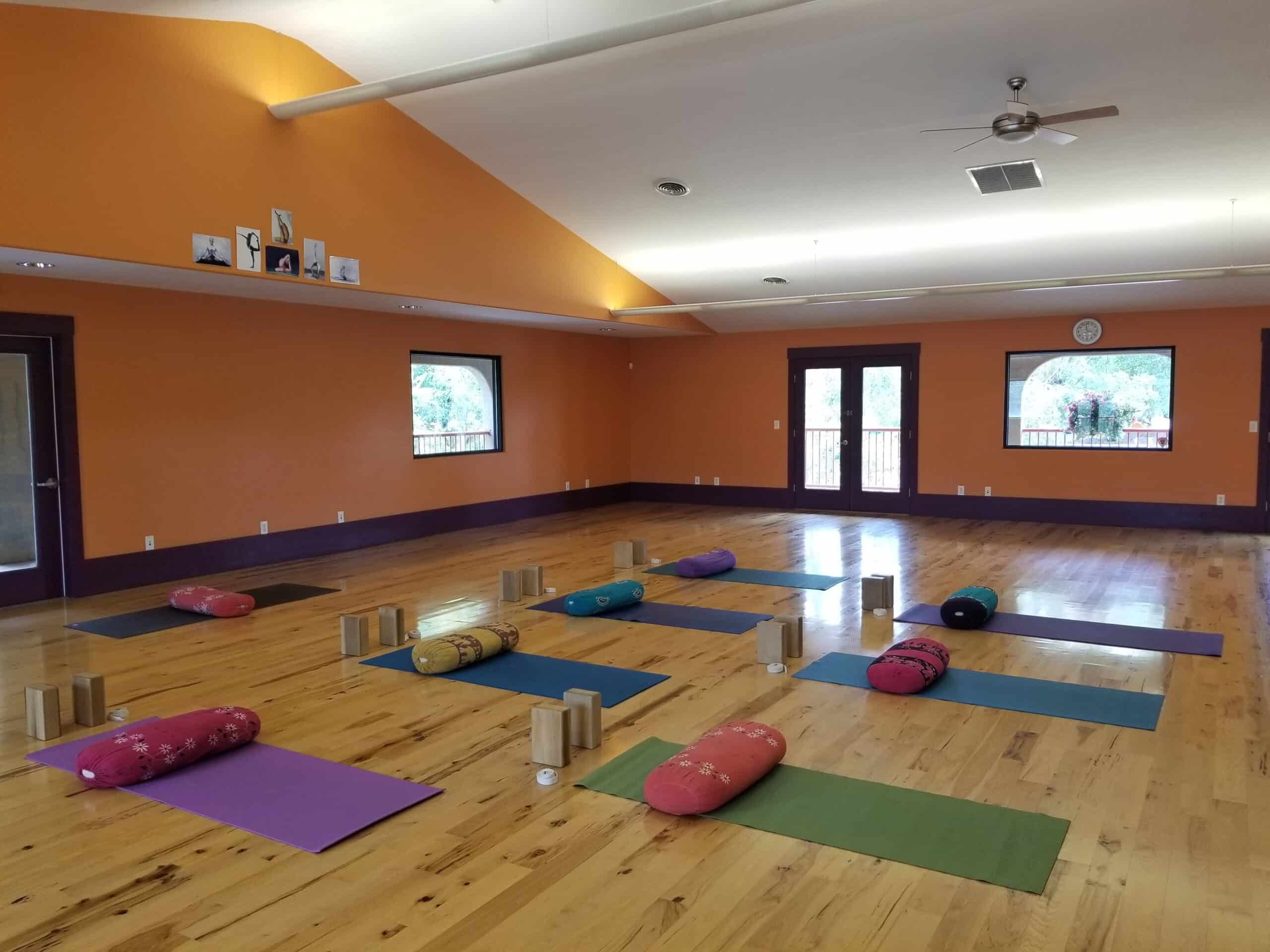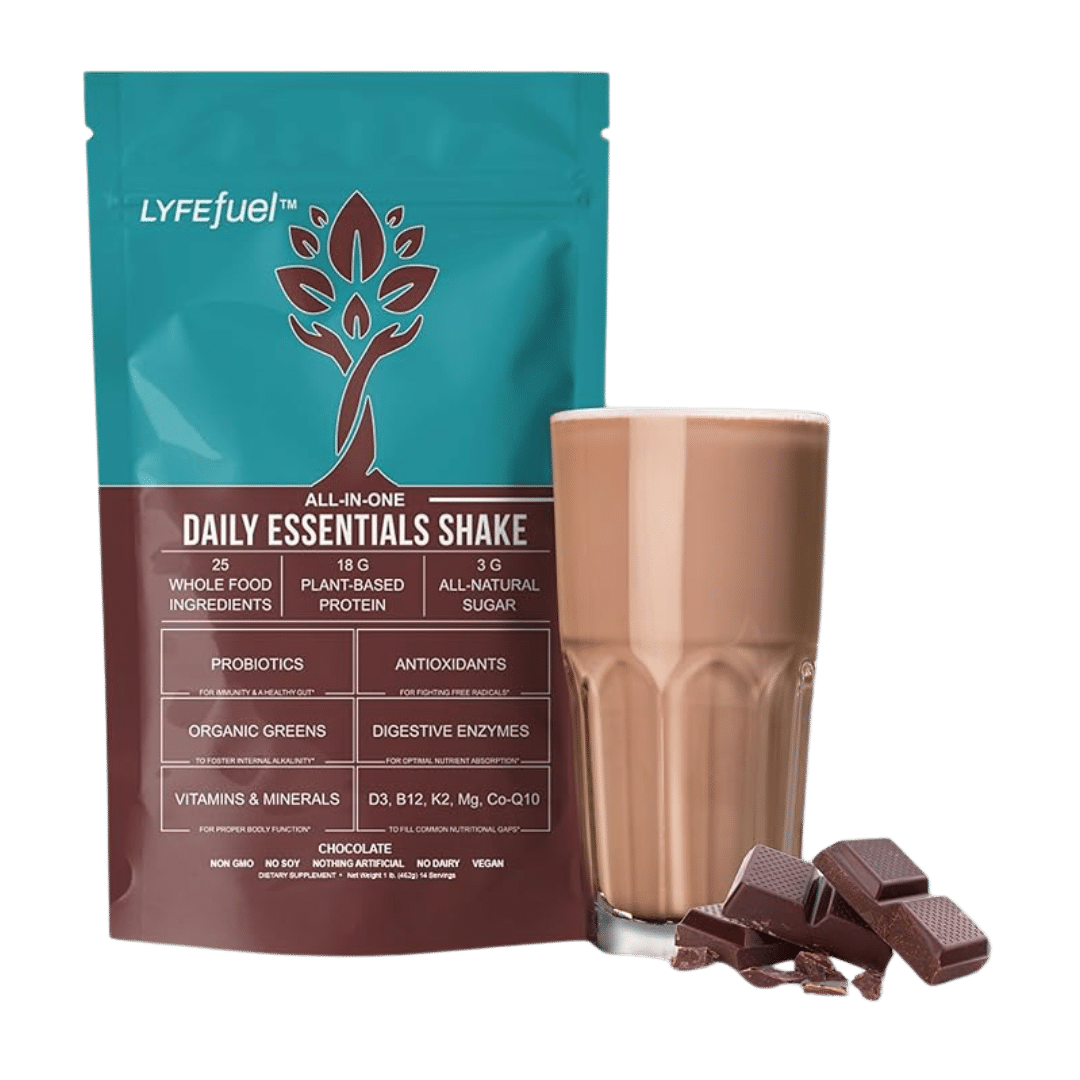“Yoga With Goose” : Trauma-Informed Yoga For Veterans | By Lexi Reich
Originally published in the Summer + Fall 2019 issue.
When yoga instructor Ashley “Goose” Cameron cued her class into tree pose, she saw the eyes of one of her students grow wide with anxiety. He had been attending the Thursday night veteran yoga classes for 18 months, and balancing postures still wreaked havoc for him. For one thing, he struggled with Parkinson’s disease. But even more troubling was the flood of emotions that seemed to come pouring into his body each time he entered tree pose.
“When trauma releases, the body starts to change,” says Goose.
That night, she stepped in front of his mat, meeting his gaze. As he raised one foot and lifted his arms long like branches, he trembled, but a smile spread across his face. He grew taller, his foot firmly rooted. Goose had never seen him hold the pose for so long.
Veterans like this one attend Goose’s weekly classes at Yoga-V in Grand Junction, Colorado, not only because they are free, but because Goose is the only trauma-informed yoga teacher in the area who is also a veteran herself. This unspoken understanding, she says, immediately bonds her with her students, creating a safe space for veterans to be vulnerable in the healing process of yoga.
Goose completed yoga teacher training after medically retiring from the Navy in January of 2015. A long road of recovery from physical and emotional damage led her to where she is now: healing an underserved population of veterans with service yoga. Goose has worked with nearly 200 veterans in her two years of teaching in Colorado, and says the number grows each week.
Yoga has become one of the most commonly used complementary therapy approaches in the U.S., according to a study by the U.S. National Library of Medicine on post-traumatic stress disorder.
Crystal Woolen, another student of Goose’s, can see why. As a veteran herself, she values Goose’s attention to yoga as therapy. Trauma-informed yoga is really people-informed yoga, where the healing is not centered just on the physical body, but the emotional and spiritual aspects as well.
“In her class, I didn’t find my physical limitations, other’s expectations or even the stereotypical concept of yoga important,” says Woolen. “I found space for myself to grow. I can be strong, vulnerable and hopeful on my mat. Goose taught me that.”
Often left feeling isolated from society following their experience in the military, veterans connecting and healing from trauma in a communal yoga space gives meaning to the essence of yoga: union.
Goose’s father, a Navy veteran, had deeply instilled in her one thing as a child — service — service to others, to your country, to people in need, for a higher cause, for a higher purpose. Now she views yoga as a service, one for those who have served their country.
Goose’s father, a Navy veteran, had deeply instilled in her one thing as a child — service — service to others, to your country, to people in need, for a higher cause, for a higher purpose. Now she views yoga as a service, one for those who have served their country.
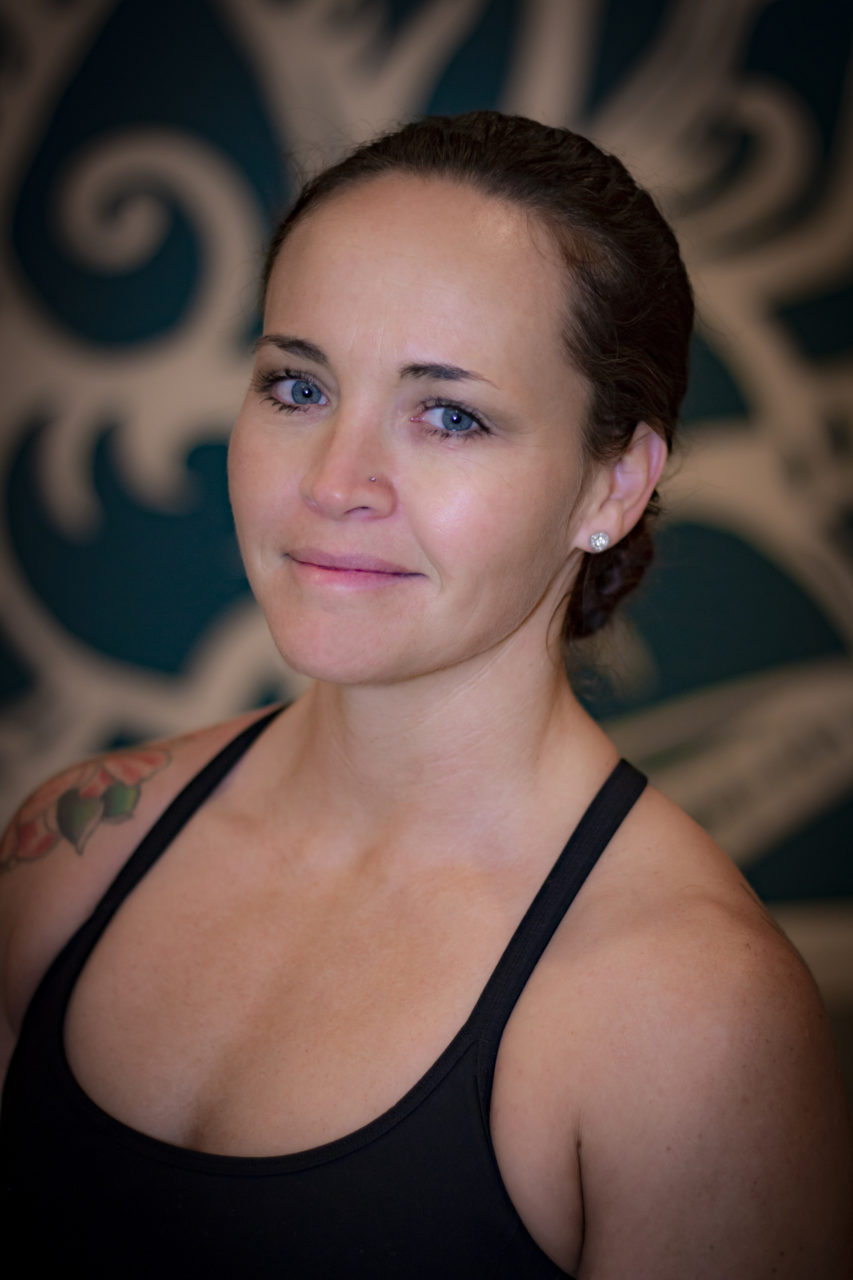
In November of 2004, Goose, at age 23, walked into a recruiting office in Oregon. She enlisted in the military five minutes later. A fourth generation Navy, she made it clear her decision was final. She served for almost 10 years, providing medical care to the Navy and Marines, and also teaching basic life support and preventative medicine to medical professionals in over eight foreign countries including the Philippines and Vietnam.
Her first year was spent working in ordnance, where she was the only female in a department of 100 to 200 men. In her later career, she never worked in a group with more than three women. Surrounded by young men, Ashley Cameron became the “Mama Goose,” making sure her colleagues were wearing sunscreen and drinking water. Many men who couldn’t afford to fly home ate holiday meals at Goose’s dinner table.
“And now everyone just calls me ‘Goose.’”
Combat + Surrender
As Goose put it, she went from combat in the Navy to combat in her home. She had been with her husband at the time, who was post active duty military, for six years and they were in the middle of a messy divorce. They have two children, but Goose describes him as “not a family man.” One night in February of 2013, Goose was finally ready to leave the unhealthy marriage. The “time bomb went off,” she says, and the argument escalated. It ended with Goose suffering a traumatic brain injury from her then-husband trying to kill her.
After that night, it wasn’t just her brain that was forever changed.
Goose has full custody of her children and a restraining order against her ex-husband. Aside from her diagnosis of a traumatic brain injury, Goose suffers from post-traumatic stress disorder and post-traumatic headaches.
“My TBI works as an angry beast with PTSD. When they work together, they work against you together,” says Goose.
She was sent to Balboa Hospital in San Diego to recover and serve limited duty. During this difficult time, someone from the WII (Wounded Ill and Injured) Clinic suggested that she try yoga. Goose rolled her eyes and laughed. As a tomboy, the image of blonde California yoga girls on Instagram didn’t appeal — she didn’t think she could do it.
Nevertheless, Goose found herself in her very first yoga class on a Thursday in January 2014 with fellow wounded warriors at Del Mar Beach. The tide was high that day, so the class was held inside at Lifeguard Station 17.
The first class didn’t click. She went through the motions and the yoga teacher told her to breathe, but Goose couldn’t close her eyes — she wasn’t ready to give in. Goose was there just to show the doctors she was better so she could go back to serving full time duty.
Goose finally got a taste of that centering in her fourth Thursday class, which was held on the beach this time. She started to pay more attention to what her teacher was really saying about being present and bringing awareness to the body. Breathe. Soften. Release.
The teacher cued a headstand, and Goose flipped upside down despite the hematoma on the right side of her head, and also despite her OCD of sand getting everywhere. It was the first time she had been upside down since her TBI. After she came down from the pose, the teacher cued the students to be still and quiet.
Goose stared at the ocean, then the tiny grains of sand brushing with the wind. For those few meditative moments, Goose’s mind became still — she was present. She noticed. She noticed the black and brown colors of sand, how the waves roll in and crash against the shore, sometimes spraying her face. Her constant need to be on guard and protect herself softened as she let go.
Release. By the end, tears were streaming down her face.
Goose and her two kids had been afraid to leave their home without someone they trusted following her ex-husband’s attack. She always had keys in her car and a bag packed had they needed to leave at a moment’s notice. This was their life. She realized how detached she had become from everything, including her kids, and that there was time to change.
That night after class, she delved into research on yoga. She learned about people recovering from injuries through the practice. With traumatic cases, the body is constantly in “fight or flight mode,” she discovered. She knew that committing to the breath and slowing the hormonal messengers down was one way to ease PTSD. Goose saw that yoga could offer the emotional healing that physical therapy missed.
Goose and her kids created a makeshift yoga space in their living room. They played, flowed and reconnected. Yoga allowed Goose to “ … peel back the layers and be truly authentic with [her] kids.” She started to let them see her cry, have headaches, be in pain and be human.
Her daughter, 4 years old at the time, told her mom to “just keep breathing.”
But even with yoga in her life, Goose’s TBI was debilitating. She had fully intended to spend her whole career serving in the Navy, but instead she was sent home with a lifetime disability paycheck.
Teaching the Art
The space her favorite yoga teacher, Anthony Chavez, held for her in class at LifePower Yoga was exceptionally special. He kept her grounded and on the mat — he allowed her to just be.
In a conversation after class one day, Chavez told her to better serve others, she needed to first serve herself. That meant deepening her practice so she could share it. He gave her the studio’s teacher training scholarship because he believed in her. Tears rolled down both of their cheeks. One week later, Goose was in yoga teacher training.
Memorizing yoga poses was challenging for Goose’s injured brain. But in this she found gratitude, because she learned she could teach in an authentic way from the heart moment-by-moment without having to rely on memorization. Goose said she’s grateful for her TBI. Because of it, she has become more mindful and in-tune with her own needs and feelings.
“I wouldn’t change anything. This is who I am right now,” she shares. “I’m just here, going through my journey, living life how it comes. I’m not concentrating on what could’ve been different.”
Following her teacher training, it was time to move back to her birthplace of Colorado from California for a fresh beginning in June 2016. She marched straight to the VA (Veterans Affairs) and asked if they had a yoga program. They did, but it was more clinical, physical-body centered.
Rob Schware, a trauma-informed yoga teacher and founder of The Give Back Yoga Foundation, says with trauma-informed classes, “There is more attention paid to creating a safe environment for people.” For example, he says, the room may be set up so that they can see the door, bright lights and strong smells such as incense would not be used, and the class would have little to no touching or assisting because some people may feel violated by being touched.
Goose knew veterans needed trauma-informed yoga to heal the internal emotional body, and she knew she had to do something about it. She wanted to tell every veteran in the world to get on a yoga mat. But not every yoga studio caters to veterans. Goose was a successful volunteer yoga instructor at the Veterans Arts Center, but without proper funding to secure studio space, her dream of a veteran yoga program was slipping.
Several veterans who had taken Goose’s classes approached Wendy Hoffman, director of the Veterans Arts Center, pleading to save the yoga classes. “[Goose’s] drive and passion, along with testimonials of veterans attending, prompted us to locate grant funds to cover all of our complementary healing arts,” says Hoffman. The annual grant funds for the yoga program are provided by the Colorado Department of Military and Veterans Affairs.
“Yoga, and other complementary and alternative healing arts, are very important in the holistic approach to healing from emotional wounds and trauma related injuries,” says Hoffman.
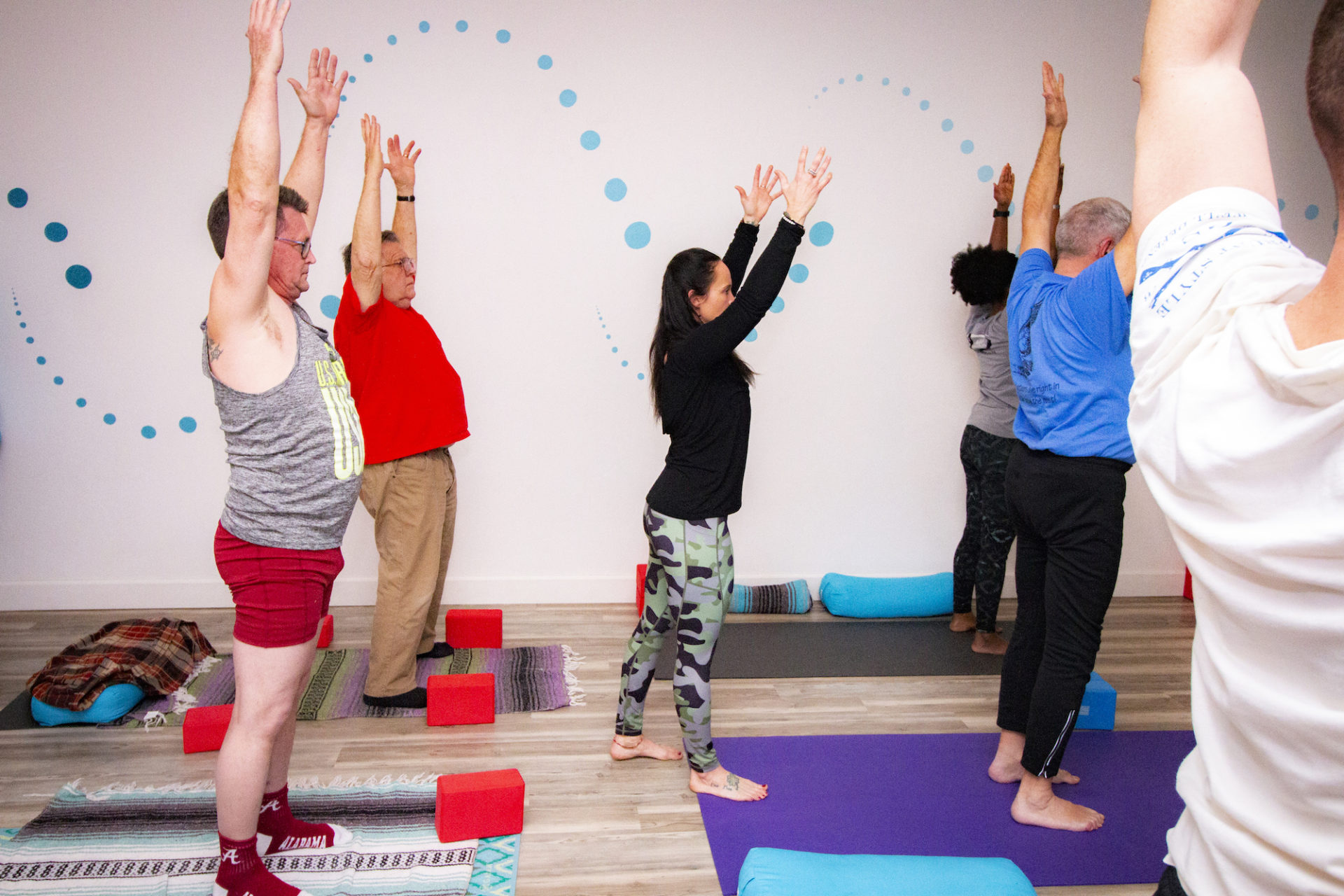
Today, Goose teaches at 6 p.m. every Thursday in the Grand Valley. The grant also covers adaptive yoga, which she teaches to veterans who are in wheelchairs, almost completely blind, dealing with spinal cord injuries or traumatic brain injuries, stroke victims and more. And it’s completely free to them.
But what about veterans who can’t attend Goose’s classes in person? She didn’t want to send them off to a yoga studio that wasn’t trauma-informed because it could trigger them, or be too challenging and turn them off from the practice.
The Sunday after Thanksgiving in 2018, she raised money online and in 36 hours had enough donations to hire a videographer, and “Yoga With Goose” was born. By recording her veteran yoga classes, the practice becomes accessible to a wider population than ever before. And of course, the videos are — and always will be, she adds — free.
Goose wants to open her class to not only veterans, but active duty members as well. The greatest challenge is just getting them to come to their mats first, as that was Goose’s greatest hurdle in the beginning, too. But it’s becoming easier now because there is growing conversation around it. And that’s part of the goal.
Goose tells her students: “It’s not about how you look in the practice, but how you feel, and that won’t look the same for everybody.”
Comeback Yoga, a nonprofit based in Golden, now offers periodic master teacher training to enable its teachers to provide yoga classes suited to veterans. Comeback also offers scholarships to their veteran students who wish to pursue their own teacher training, just like what Chavez offered to Goose.
It comes back to union: serving veterans so they can continue to serve others in their community.
But the true goal: reintegration in society. Goose hopes that after growing and learning in a veteran yoga class, her students can attend yoga classes with the rest of society, and feel comfortable and confident doing it. And this applies off the mat as well. Goose’s goal is for veterans to heal and be comfortable out in the world. They too, she hopes, can root their feet down and grow their branches long and tall in tree pose.
Photos by Todd Braley.
Not every nutrition shake is created equal and LyfeFuel’s is top tier. Made with 50+ whole food nutrients [...]

Subscribe to Our Tribe
Stay up to date with Y+L News, Events and special announcements.






